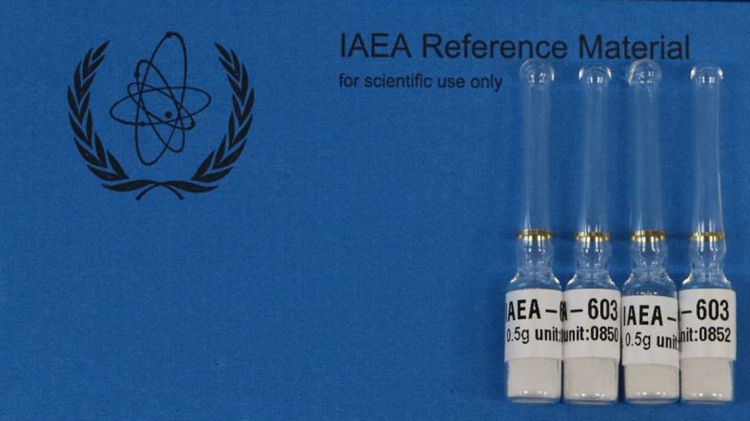The IAEA Environment Laboratories have recently produced a new reference material using Carrara marble, the same marble that Michelangelo used to make his famous sculpture of David. This will contribute to improved measurements of greenhouse gases, such as carbon dioxide and methane, and provide information on their origin. A more precise understanding of these greenhouse gases can help Member States to better understand and therefore manage the sources of their emissions and work towards their Intended Nationally Determined Contributions (INDCs) as laid out in the Paris Agreement.
Why do we need this new reference material? Carbon dioxide (CO2) released during the burning of fossil fuels has a unique isotopic signature, which is similar to the isotopic signature of the plants and other organic matter from which it originates. By studying the isotopic ratio of stable carbon isotopes in atmospheric, marine, and ice core samples, scientists can assess the sources of carbon in these materials and have been able to determine that, since the industrial revolution, the increased levels of CO2 in the atmosphere result from fossil-fuel combustion. Isotopic ratios also provide valuable insight into other sources of greenhouse gases in the atmosphere such as from agriculture (rice fields, livestock) and land-use changes.
Furthermore, Greenhouse Gases such as carbon dioxide (CO2) and methane (CH4) move between different environmental compartments (the atmosphere, the ocean, terrestrial biosphere and sediments). This is known as the global carbon cycle. The reservoir of carbon stored in the deep ocean is 50 times larger than that in the atmosphere, with the ocean currently taking up about a quarter of the CO2 emitted by human activities each year. A small change in fluxes to the ocean carbon pool, such as those potentially caused by climate change and the rising temperatures, could affect the storage capacity of the ocean, which in turn could have dramatic consequences for atmospheric CO2 levels. If, for example, the biological pump in the ocean were to shut off, atmospheric CO2 could rise anywhere between 200 and 400 ppm above today’s levels of ~400 ppm, reached for the first time in 2015. Accurately quantifying these fluxes and stocks of carbon is critical to constructing climate models that can be used to predict the impacts of climate change.







